by Jasmine | Dec 1, 2021 | Alternative Health, Partner Yoga, Yoga For Weight Loss, Yoga Health
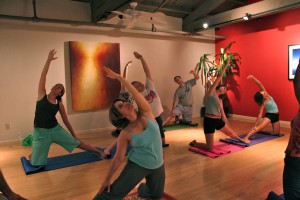
Dump Your Excuses to Exercise
The benefits of exercise are many—equaled in number only by our excuses for avoiding it.
Just one in four U.S. adults works out at low to moderate intensity for 30 minutes most days of the week or at vigorous intensity for 20 minutes three days a week.
Some of those excuses—I weigh too much, I’m too old, I have too many health problems—are in themselves strong arguments for increasing physical activity. It’s harder to see through other reasons that show up in surveys asking why people don’t exercise.
Jasmine Kaloudis, a yoga and fitness instructor in Philadelphia, suggest these ways to work around the most common excuses and mostly around yoga to lose weight.
“I don’t like exercise”
Kaloudis suggests you think back to your childhood. “When we were kids, we ran and jumped and played all the time, and then we grew up and it became ‘exercise,'” she says.
Here’s what to do:
Add movement to something you like to do. If you play golf, walk the course. If you like music, listen to your favorite tunes as you walk. Take a stroll with family or friends.
Do you have a dog? Most dog love to run around and chase. Find a nearby dogpark if you don’t have a closed in yard. The kids will find great delight in this also.
Exercise with a friend. Instead of meeting at Starbucks for a fattening double mocha latte, suggest talking a walk around the lake. If you have children, play soccer or some outside games. If it’s cold, you can turn on the music inside and dance. Besides getting fit, you are creating memories. Schedule these kinds of activities on a weekly basis.
“It’s too expensive to join a gym or hire a personal trainer or buy fitness DVDs.”
The internet is your answer. There is an unbelievable amount of free exercise routines in all kinds of subjects such as yoga, martial arts, boxing, tennis. etc.
Often many gyms or fitness clubs will have special intro rates. If you are having financial challenges then let the club or trainer know what you can budget toward fitness and see if they can accomodate you.
If you also have a skill such as massage therapy or carpentery, see if you can trade or barter services. This can work well with independent practitioners but not with a big corporate gym chain.
“I don’t have the time”
This is the granddaddy of exercise excuses. With the demands of work, family, and other obligations, it seems plausible. Except when you consider that lack of exercise—and the poor health that follows—can affect the quality of every waking moment. Here’s how to overcome the excuse:
Make exercise a priority. If you think of exercise as being as important as brushing your teeth or any other “essential” routine, you’ll find time.
Avoid the “all or nothing” trap. If you can’t find 30 straight minutes to work out, try for three 10-minute blocks—or even one 10-minute block. A little exercise is better than none.
Be flexible.
Incorporate movement whenever you can. Walk instead of driving. Climb stairs instead of riding the elevator. Do calisthenics, stretch, or ride an exercise bike while you watch television.
This is a more drastic option, but consider getting rid or the TV or getting rid of some cable stations. How important is it to your life that you caught the last episode of Grey’s Anatomy? When you don’t have those extra stations, you won’t miss them. You will have more time and less excuses for being active and healthy. You’ll also save money on your cable bill.
Are you committed to changing your life or are you committed to your excuses?
by Jasmine | Nov 6, 2018 | Alternative Health, Yoga Health
Restorative yoga is one of the most underrated of all the kinds of yoga out there but one of the yummiest, the dessert of yoga. You won’t get Taylor Lautner’s abs from doing this kind of practice since there is no jumping and hopping around like some of the power yoga classes out there but they are gentle restorative yoga poses if you have cancer.
There are various adjustments to traditional yoga that allow for a gentle, therapeutic practice. This is called restorative yoga and classes generally consist of poses, breathing and meditation.
Yoga may also assist in managing depression, anxiety, insomnia, pain, and fatigue. It can increase the quality of life for those directly affected by cancer and those who care for them. Complementary therapy such as yoga can be crucial in helping those affected by cancer develop a solid physical, emotional and mental base as they make- the sometimes difficult- transition from being a person with cancer to living as a cancer survivor.
Cancer patients often find themselves in distracted states of mind—bombarded as they are by frightening, sometimes contradictory, information, subjected to invasive, painful procedures, and not-always-compassionate medical care. When our minds are so grievously disturbed, we may find it impossible to make crucial decisions or relate satisfactorily to our family and friends. Practicing controlled breathing exercises (also called Pranayama), meditation can help in relieving tension. When the tension is released, energy can flow more easily in the body and allow patients to experience a sense of well-being, emotional mastery and strength. In healthy people when practiced appropriately with an experienced teacher, yoga is generally considered to be safe especially restorative yoga poses for cancer.
People with certain medical conditions should not do certain yoga practices or should consult a medical practitioner that is also knowledgeable about yoga poses and contraindications. For example, people with disc disease of the spine, extremely high or low blood pressure, glaucoma, retinal detachment, fragile or atherosclerotic arteries, a risk of blood clots, ear problems, severe osteoporosis, or cervical spondylitis should avoid some inverted poses.
Although yoga during pregnancy is safe if practiced under expert guidance, pregnant women should avoid certain poses that may be problematic and should only practice with a teacher trained in prenatal yoga.
Yoga can boost a woman’s quality of life while she’s being treated for breast cancer. According to recent research, women who did yoga classes had better emotional, social, and spiritual well-being compared to women who didn’t do yoga. Women who were not having chemotherapy got more benefits from yoga. This could be because fatigue and other chemotherapy side effects may make it harder to participate in a yoga class.
Maintaining balance in your life while dealing with breast cancer can be difficult. Yoga focuses on the interactions between your mind, your body, and your behavior. While scientific research on yoga is relatively new and the studies are small, early results have shown that some yoga may help ease physical and emotional symptoms in some people. When combined with conventional medicine, complementary therapies may offer a more integrated approach to healing.
Sleep disturbances and fatigue are an enormously burdensome problem among cancer survivors; 30 to 50 percent of newly diagnosed or recently treated cancer patients have trouble sleeping, and 70 to 96 percent of recently treated cancer patients complain of fatigue. The reasons for this aren’t clear. Experts cite psychosocial factors as well as physical ones.
Restorative yoga, which is the most gentle kind of yoga, may provide some relief of fatigue and depression problems for women with breast cancer. In restorative yoga you can hold the poses for longer because you’re being supported. Researchers found women who practiced this gentler version of the popular mind-body therapy had a 50 percent reduction in depression and a 12 percent increase in feelings of peacefulness.
Practicing continuous flowing movements has a positive impact on the lymphatic system and in particular Lymphedema. When lymph fluid is disrupted through breast cancer surgery, trauma or infection there may be an excessive fluid build up. This stagnant fluid can play havoc on the tissues and create swelling. There also can be a reduction of the oxygen intake or absorption to the lymphatic system; all of which increases the chance for infection.
Practicing a flowing yoga keeps the lymphatic fluid pumping throughout the body’s channels, rather than accumulating or backing up. It is great for maintaining healthy breast tissue. To keep this fluid moving, we need to also foster relaxation. It will facilitate renewed or restored strength, and flexibility.
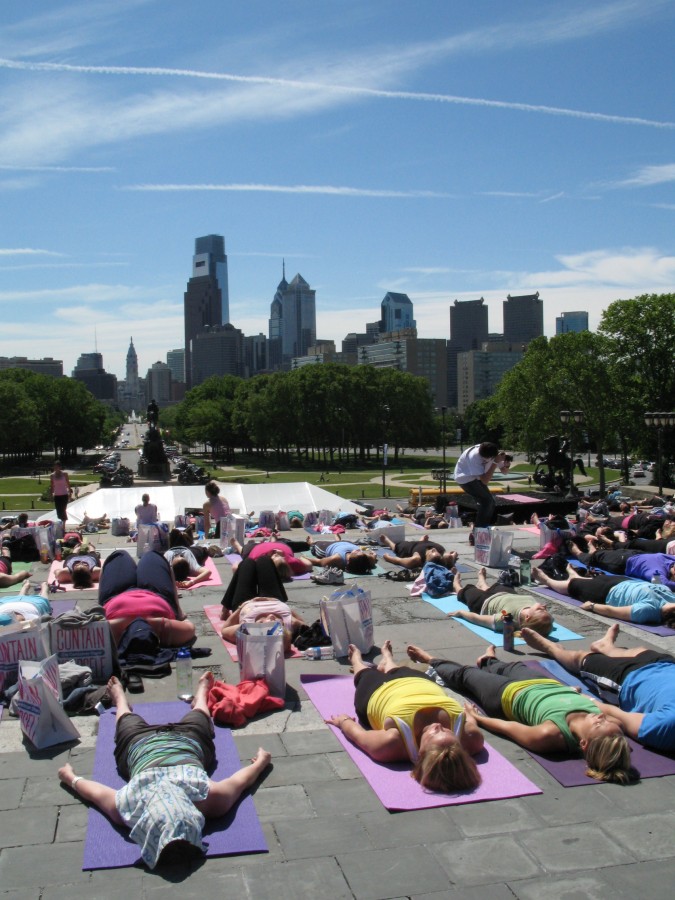
Yoga for Pain Relief: Simple Practices to Calm Your Mind and Heal Your Pain
Flowing yoga movements develop a supple spine and a strong nervous system so when the nervous system is in balance the parasympathetic and sympathetic system work together creating great calm.
When flowing in the practice the poses encourage digestion, assimilation and elimination. The body’s immune system is stimulated to maintain health. When flowing from a backward bend to a forward bend, the spine will roll vertebra by vertebra, either in an ascending or descending order, while following the natural wave of the spine. Here it will recognize naturally that a backbend (extension) will flow from a forward bend (flexion) and vice versa.
There is so much to learn from survivors about being in a warrior pose. Living with fear helps make a warrior. It is the first lesson cancer teaches a survivor, being prepared for the uncertainty of their new life. Having worn the coat of a life-threatening diagnosis, practicing savasana is no longer just an “idea” or an abstraction, but can be an unavoidable part of daily life. I believe this is the biggest difference in teaching yoga to cancer survivors. A life-threatening illness can help us all learn how to live fearlessly. Another difference is that it can become a shared goal for both the yoga teacher and student. If faced directly, cancer is everyone’s teacher.
What are your thought about practicing yoga and when you have cancer?
by Jasmine | Jan 1, 2018 | Alternative Health, Beauty
 I’ve been making my hottie hellenic hubby a bit wonky with all the natural beauty treatments I have been dabbling with lately. He’s actually limited me to no more than one beauty experiment a day (what century are we in that our men can try to impose rules on us anyway?) As I write this I am making my own rosewater from roses I plucked from our garden. Here are some wallet-friendly beauty treatments that I have been experimenting with lately. Most of these things you will probably have in your house anyway so no need to go out and buy a bunch of new products. I love all the beauty stuff at Whole Foods with their commitment to clean ingredients but my wallet feels so naked after I shop at this place. Some of them get a bit messy though and I had a few failures as well (don’t ever put a bunch of Pepto Bismo on your face…stained it pink!) .
I’ve been making my hottie hellenic hubby a bit wonky with all the natural beauty treatments I have been dabbling with lately. He’s actually limited me to no more than one beauty experiment a day (what century are we in that our men can try to impose rules on us anyway?) As I write this I am making my own rosewater from roses I plucked from our garden. Here are some wallet-friendly beauty treatments that I have been experimenting with lately. Most of these things you will probably have in your house anyway so no need to go out and buy a bunch of new products. I love all the beauty stuff at Whole Foods with their commitment to clean ingredients but my wallet feels so naked after I shop at this place. Some of them get a bit messy though and I had a few failures as well (don’t ever put a bunch of Pepto Bismo on your face…stained it pink!) .
These can be fun girls nights or slumber party stuff to do together instead of spending $150 a person at a local spa. Some of these will stay for awhile ( like the scrubs, Milk of Magnesia and rose-water toner) so I am even thinking about buying little containers , putting my own pretty label on it and giving them as Christmas presents.

Chuck your Toner and Grab Your Lemon – How much is toner anyway, like $20 a bottle? Yikes! Instead of using this, I just rub my face with a lemon, I actually use the same lemon a few times so I only need to use about 2 lemons a week. You could also buy some witch hazel at the $1 store if you aren’t partial to rubbing produce on your face.
Morning Face Rinse – You can use a tomato, splash of whole milk or lemon to rinse and activate your skin the morning.
Cucumbers – Next time you peel and seed a cucumber for a salad, take the seeds and put the green mush on your eyes while laying on the ground with a towel under you and some paper towels nearby to wipe up the drippings. You’ll lose about 5 years from your eyes. Put your legs up the wall as you lay down while doing this and you will get a restorative yoga pose out of this.
Body Scrub – How much have you paid for these things? Up to $20 a jar? Take some olive oil, sugar and lemon and scrub them on your feet, elbows and knees. Yay! You’re all shiny and new.
Blond Brightener – Make a few gallons of chamomile tea and let it steep and cool. Rinse your hair with it to bring out your blond highlights. You can also put in a spritzer and spray on your face for a pick-me-up.
Brunette and Red-head Brightener – Take 1/2 cup apple cider vinegar and 2 cups water and rinse your hair with this  after you shampoo and condition. Will be a bit sour smelling at first and then will go away. I’ve also heard beer works but I doubt hubby would want me to waste a can of his beer on my hair plus it will be stinky at first but then smell will go away.
after you shampoo and condition. Will be a bit sour smelling at first and then will go away. I’ve also heard beer works but I doubt hubby would want me to waste a can of his beer on my hair plus it will be stinky at first but then smell will go away.
Milk of Magnesia Mask – Most people have a bottle of this in their medicine cabinet and never use it. I think this one is one of my favorites, but also one of the messiest. Put on an old-shirt you don’t wear out of the house. Dab it on with your fingers and let dry for 30 minutes. Go up to the dog and yell “BOO!” since you will look kind of scary in this. Ideal for oily complexions, especially in summer.
Honey Face Mask – Dab your face with honey and let sit for 15 minutes. Rinse and pat dry off and now you’re all silky.
Avocado Face Mask – Best for dry skin. Whatever parts of the avocado you don’t eat, just rub the rest on your face for 15 minutes and then rinse off. You can use this for other body parts, feet, hands, elbows. etc.
Banana Face Mask – Good for all skin types, Mash up 1/2 a banana and then apply and leave for 15 minutes and then rinse off. Now your skin is all dewy and radiant.
Oatmeal Face Mask – Good for all skin types, Whatever you don’t eat from your breakfast, go apply and leave for 15 minutes and then rinse off.
Rose Water Toner – Instead of chucking those roses once they start falling apart, combine with 1-2 cups boiled water , let them steep and store in an airtight container in the fridge.

Petroleum Jelly – Rub on your hands at night, wear cotton gloves, go to sleep feeling a bit funky and kinky wake-up with baby-soft hands.
Lip Stainer – Either beets or cherry jello powder can be applied to your lips to stain them combined with a bit of petroleum jelly.
Bath Time – Get some herbal tea bags (not the black tea though) and chuck a few of these in your bath. Recommended flavors are chamomile and sage.
Stinky Feet? Get some black tea (not herbal) and boil a few gallons worth. Let cool and let your feet steep in this.
Teeth Whitening – Conventional teeth whitening can be pricey or can be painful ( my teeth always seem to hurt when I leave the bleach on). Take some burnt toast (the charcoal is what will take away the yellow) and rub, brush on your teeth vigorously for awhile. This won’t taste great but your wallet and tender-teeth people like me) will appreciate this technique.
What natural beauty treatments have you tried and what results did you get?
by Jasmine | Jan 29, 2017 | Alternative Health, Fertility, Yoga Health
 It is possible to increase fertility with yoga poses: restorative fertility yoga postures encourage human body to be more open to conception. It is not about being more flexible and being able to curl your left leg over your right shoulder: this will not boost your fertility: yoga is about balancing body and mind and not only improving your physical conditional and body flexibility. There are additional external factors that contribute to the fact you might have problems trying to conceive, and these include caffeine, alcohol, smoking, stress, including communication between partners and financial worries etc.
It is possible to increase fertility with yoga poses: restorative fertility yoga postures encourage human body to be more open to conception. It is not about being more flexible and being able to curl your left leg over your right shoulder: this will not boost your fertility: yoga is about balancing body and mind and not only improving your physical conditional and body flexibility. There are additional external factors that contribute to the fact you might have problems trying to conceive, and these include caffeine, alcohol, smoking, stress, including communication between partners and financial worries etc.
Many people are diagnosed with unexplained infertility, treating infertility with yoga can change that diagnoses. Usually a contributing factor for infertility is stress and stress related issues. Yoga not only tones your body but it is an excellent stress reliever. It also targets specific areas of the body including organs, glandular and circulatory systems. If you start using a yoga practice for fertility your chances of overcoming infertility are three times greater than not using yoga at all. A practice specific for fertility will focus on stress relief, strengthening and toning muscles, and balancing the reproductive organs and hormones. Stress, however, has been shown to reduce the probability of conception.
Alice Domar, who has a Ph.D. in health psychology and is the director of mind-body services at the Harvard-affiliated center Boston IVF, said of yoga: “It’s a very effective relaxation technique, and a great way to get women in the door to get support. It’s a way to get them to like their bodies again.” In 2000, she, published the results of a study in Fertility and Sterility (Vol. 73, No. 4) that showed women who participated in her program, which included relaxation and yoga, were almost three times more likely to get pregnant than women who didn’t. A Gentler Form of Exercise Dr. Domar has an interesting theory about one of the ways that some women seem to benefit from yoga. “I believe that vigorous exercise may reduce fertility in some women,” she says. “We can’t predict whose fertility is exercise sensitive.
Yoga is something they can do that will reduce stress without impacting their fertility. For really chronic exercisers, my clinical impression is that at least half that stop get pregnant. Yoga is the best tool I have for these women.” According to Rahul Sachdev, M.D., a specialist in Reproductive Endocrinology and Infertility at the Robert Wood Johnson Medical School in New Brunswick, New Jersey, incorporating the health-enhancing benefits of yoga with traditional and innovative medical intervention can relieve the stress associated with infertility, thus vastly increasing the chances for conception. Treating infertility with yoga is a natural and cost effective way to conceive. Did you know that the treatment for infertility business is $2 billion dollar business. Many couples spend thousands of dollars for various treatments that can cause painful side effects, financial strain, and additional stress. Many of these treatments are not successful and the couple continues trying different treatments becoming more frustrated and financially troubled.
The Mayo Clinic recently acknowledged that chronic stress can lead to a variety of health and emotional problems. Yoga is an effective method to reduce stress and anxiety. But in addition, yoga for fertility can help to detoxify the body while relaxing tight muscles and connective tissue. The specific areas in Yoga for fertility of the low back (sacral plexus) hips, groins and pelvis begin to improve in blood flow and circulation-which can aid in healthier gynecological function. As the body relaxes, the mind calms and the nervous system is aided by the breath to help lower stress hormones like cortisol, which can impede reproductive hormone function. This can potentially be beneficial for fertility. Learning to listen to the body’s natural rhythms through yoga and breathing can bring a deep sense of peace and connection to our own innate healing capacity, helping women and couples feel more empowered on their journey.
To treat infertility with yoga there a some basic steps you can take to get you started. This first thing is to make a commitment to start lifestyle practices that will reduce your stress level. Stress can cause your hormones and organs to become off balance. When you are not in balance your body is not working to it’s full potential. Yoga breathing will help calm the body and mind replacing the negative thoughts with positive. There are specific poses in yoga that focus on your reproductive organs and pelvic area to increase blood flow and stimulate energy. There are also poses that soften the abdominal area clearing tension from the uterus, ovaries and fallopian tubes which will increase their productivity.
Yoga will bring balance to your body, mind, and soul specifically your hormone levels. These poses will improve your glandular function which will stabilize hormones. In order for the reproductive process to occur your hormones must be in balance. Yoga is a natural way to treat your infertility by decreasing the stress from month after month of trying to conceive. When your body is stressed and tense so are your organs causing them not to work properly. Yoga will calm and release the tension specifically in the pelvic region which brings increased blood flow to your reproductive organs and allows the energy to flow freely opening and softening the pelvic organs.
See part 2 and 3 for Top Fertility Poses in Yoga.
by Jasmine | Oct 1, 2015 | Alternative Health, Prenatal Yoga, yoga fertility, Yoga Health, yoga infertility
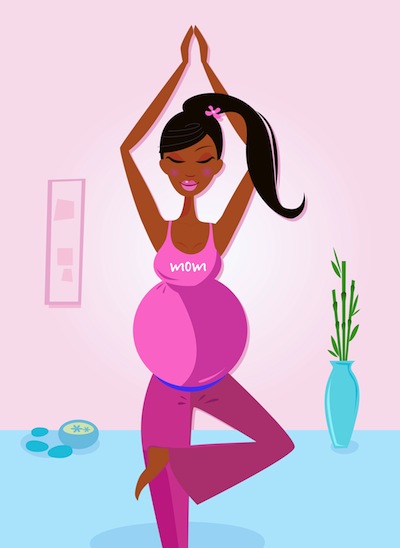
Breathing and Conceiving? Yoga and Fertility
Breath is Life. The first thing we do when we are born is inhale, the last thing we do when we die, is exhale. Our lives are made up of all the breaths in between. Breathing is essential to life, but it is also essential to creating life.
Stress and Infertility – How Yoga Helps Infertility
When we go through infertility we are often stressed, we breathe shallowly and our body starts to hold inside all the disappointment, hurt and fear. Both physical and emotional pain gets stored in our bodies as stress. When we are stressed-Cortisol is released in the brain, which impedes our ability to conceive by affecting the hormones that are responsible for ovulation and healthy gynecological function. Yoga teaches us to open the body with the breath, creating the ability to arrest the stress response, balance hormones and return the body, emotions and mind to a relaxed state.
You can literally learn to “breathe to conceive” as breath affects your state of being on every level, you learn to receive life literally and figuratively. The breath is the most effective tool we have to stop the “fight or flight” stress response of the sympathetic nervous system and return it to “the relaxation response” of the parasympathetic nervous system.
Improved Physical Health
Yoga can also impact the general reproductive health of women trying to conceive. Yoga tones and strengthens the muscles that support reproductive organs and improves spinal alignment, enabling better circulation and improved capacity and quality of respiration. For women who are taking infertility drugs, better breathing can also help the body fight off the toxic effects of those drugs.
Reducing the Physical Effects of Stress
Yoga is perfect for dealing with one of the most pervasive mind/body fertility challenges: stress, often stress caused by the inability to get or stay pregnant. Women experiencing infertility are often stress- and pain-filled, saddened and angry. These emotions generate chemicals in the body that weaken immunity and make for a less hospitable environment for a new life. Yoga, because of its use of relaxation breathing techniques, combined with the flushing out of physical toxins, provides an antidote to the negative physical impacts of anxiety, anger and depression. It also helps to change your perspective to a more objective, detached state of mind so you start to view your challenges with more calm and control.
To treat infertility with yoga there a some basic steps you can take to get you started. This first thing is to reduce your stress level. Stress can cause your hormones and organs to become off balance. When you are not in balance your body is not working to it’s full potential. Yoga breathing will help calm the body and mind replacing the negative thoughts with positive.
There are specific poses in yoga that focus on your reproductive organs and pelvic area to increase blood flow and stimulate energy. There are also poses that soften the abdominal area clearing tension from the uterus, ovaries and fallopian tubes which will increase their productivity. Where are Fertility Yoga Classes in Philadelphia? Does meditation help infertility?
Yoga will bring balance to your body, mind, and soul specifically your hormone levels. These poses will improve your glandular function which will stabilize hormones. In order for the reproductive process to occur your hormones must be in balance. What are the best Yoga Fertility Poses? Can Infertility be helped with Yoga?
Yoga and Fertility, Infertility – Not the Cure-all
This is not to say that yoga is an instant fertility potion, or that it works for everyone. It is not a quick-fix. It does aid to keep your inner peace, which can be very hard when struggling with infertility due to the frustration, anxiety, sadness and despair that infertility can produce.
Attention Ladies: New, For a Limited Time…
Take Advantage of this special “Path to Pregnancy -Coaching Session.”
During this powerful one-on-one coaching session we’ll work together to…
=> Create a crystal clear vision for the kind of pregnancy that you’d like to create using holistic and natural fertility methods.
=> We’ll uncover hidden challenges that may be sabotaging your fertility health.
=> You’ll leave the session empowered, reenergized and inspired to take charge of getting pregnant naturally.
I only do 5 free sessions a month so spots are limited. To claim your session now, email me at jasmine@synergybyjasmine.com
by Jasmine | Sep 26, 2015 | Acupuncture, Alternative Health, Chinese Medicine
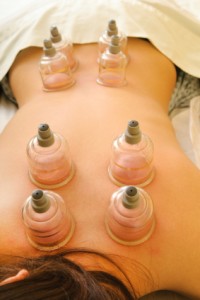 I got cupped the other day. I was promoting our Open House at Hidden River in Manayunk and one of the other practitioners, Adriane Dourte practiced cupping on me, did a cup on me or cupped me…not sure what the verbiage is here.
I got cupped the other day. I was promoting our Open House at Hidden River in Manayunk and one of the other practitioners, Adriane Dourte practiced cupping on me, did a cup on me or cupped me…not sure what the verbiage is here.
Cupping is a method of treatment used to create suction on the skin to treat various conditions. Cupping is a method of treating local congestion.
A partial vacuum is created in a cupping jar, usually by means of heat, which is then applied directly to the skin. There are many forms of cupping ranging from different techniques to different types of cups. To create the suction, a cotton ball with alcohol on it is ignited and inserted into the cup to remove the oxygen. It is then removed quickly and placed on the skin where it suctions in an attempt to restore the oxygen. There is no contact of the fire with the skin therefore the only feeling is cold from the glass then the suctioning.
There are different types of cups. There are plastic cups that use a pump in stead of fire. There are bamboo cups that are boiled in water and herbs. The heat from the water creates the suction when it touches the skin. There are rubber cups that are shaped so that pressure applied to it will create suction. There are also glass cups with a rubber bulb on top so that there is no need for the use of fire. The squeezing of the bulb creates the suction. It felt like a sea monster kind of sucking on my skin.
People afterwards kept asking me if it hurt or was painful. It is a more aggressive treatment and maybe I am revealing too much but I kind of liked the feeling of something sucking up my skin and flesh…kind of odd but a bit kinky.
According to Adriane, a Licensed Acupuncturist, “Cups can remain stationary for a period of time. They can also be moved by adding oil to the cup or the skin and running them up and down the area being treated. There are other methods as well that are not commonly used at my offices. Cupping is good for warming the body, moving blood and qi, decreases swelling and pain. It is commonly used on the back, neck, legs, arms and shoulders. It can treat acute or chronic issues. The suction may cause bruising on the skin due to pulling stagnant blood and toxins to the skin’s surface.”
The one negative of the session is that it left me with big purple and pink bruises which will go away in the next few days. For now, I can use these to freak out my friends in family since my back looks like the chick in the movie “Species”.
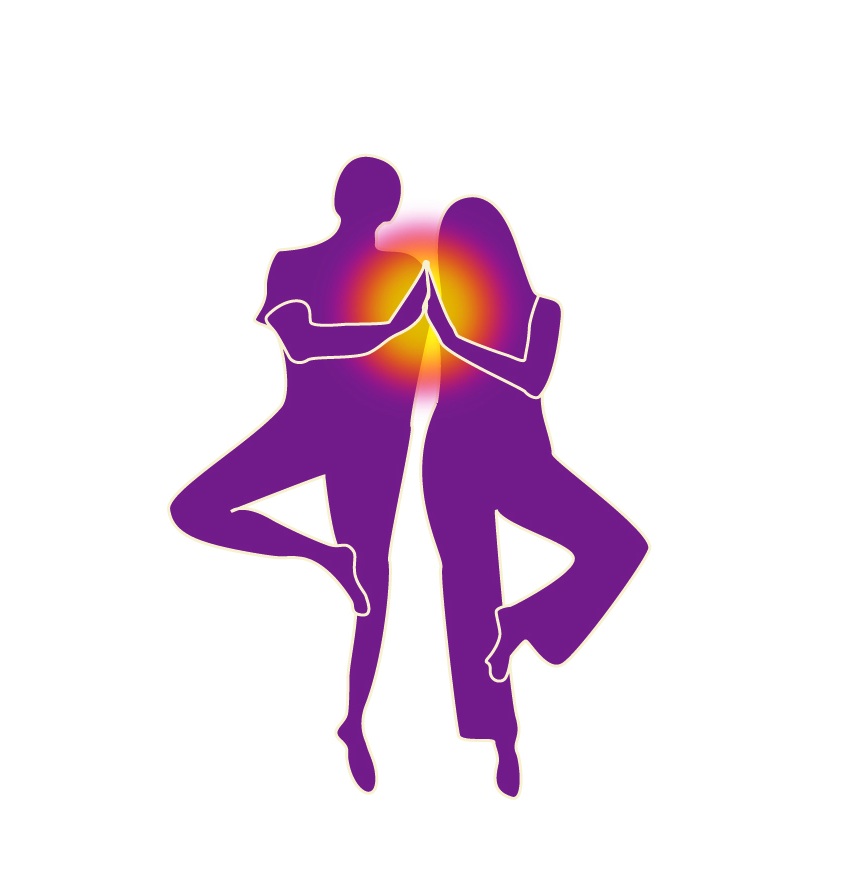


 I’ve been making my hottie hellenic hubby a bit wonky with all the natural beauty treatments I have been dabbling with lately. He’s actually limited me to no more than one beauty experiment a day (what century are we in that our men can try to impose rules on us anyway?) As I write this I am making my own rosewater from roses I plucked from our garden. Here are some wallet-friendly beauty treatments that I have been experimenting with lately. Most of these things you will probably have in your house anyway so no need to go out and buy a bunch of new products. I love all the beauty stuff at Whole Foods with their commitment to clean ingredients but my wallet feels so naked after I shop at this place. Some of them get a bit messy though and I had a few failures as well (don’t ever put a bunch of Pepto Bismo on your face…stained it pink!) .
I’ve been making my hottie hellenic hubby a bit wonky with all the natural beauty treatments I have been dabbling with lately. He’s actually limited me to no more than one beauty experiment a day (what century are we in that our men can try to impose rules on us anyway?) As I write this I am making my own rosewater from roses I plucked from our garden. Here are some wallet-friendly beauty treatments that I have been experimenting with lately. Most of these things you will probably have in your house anyway so no need to go out and buy a bunch of new products. I love all the beauty stuff at Whole Foods with their commitment to clean ingredients but my wallet feels so naked after I shop at this place. Some of them get a bit messy though and I had a few failures as well (don’t ever put a bunch of Pepto Bismo on your face…stained it pink!) .
 after you shampoo and condition. Will be a bit sour smelling at first and then will go away. I’ve also heard beer works but I doubt hubby would want me to waste a can of his beer on my hair plus it will be stinky at first but then smell will go away.
after you shampoo and condition. Will be a bit sour smelling at first and then will go away. I’ve also heard beer works but I doubt hubby would want me to waste a can of his beer on my hair plus it will be stinky at first but then smell will go away.


 I got cupped the other day. I was promoting our Open House at Hidden River in Manayunk and one of the other practitioners, Adriane Dourte practiced cupping on me, did a cup on me or cupped me…not sure what the verbiage is here.
I got cupped the other day. I was promoting our Open House at Hidden River in Manayunk and one of the other practitioners, Adriane Dourte practiced cupping on me, did a cup on me or cupped me…not sure what the verbiage is here.